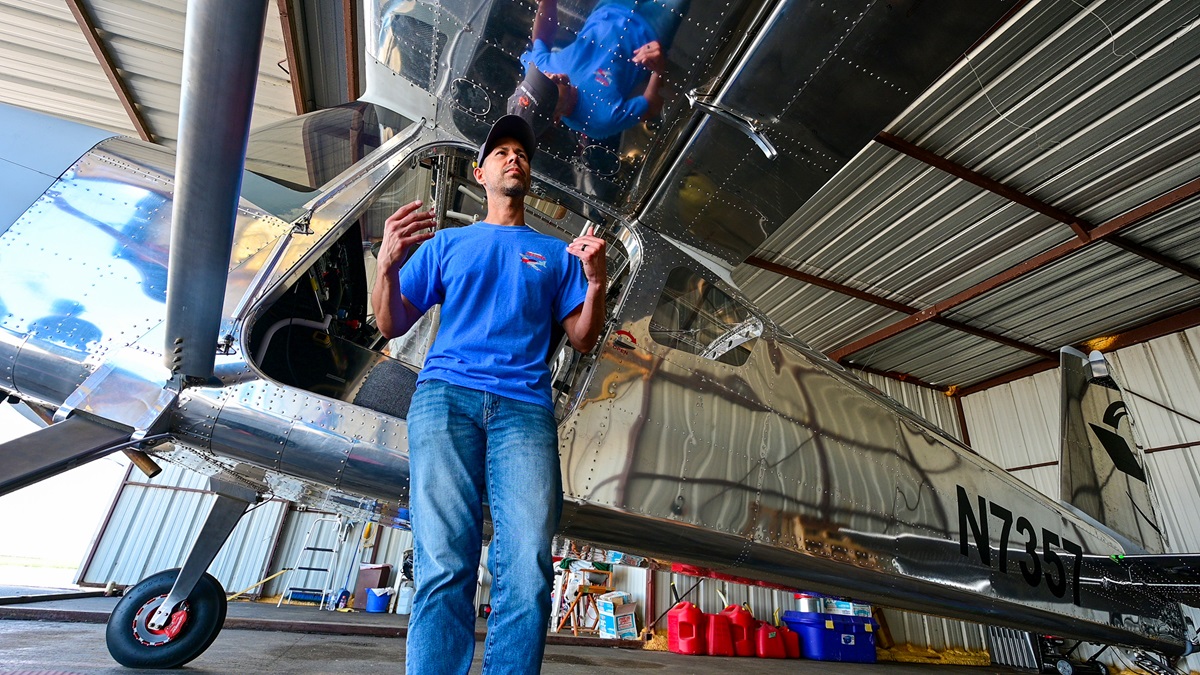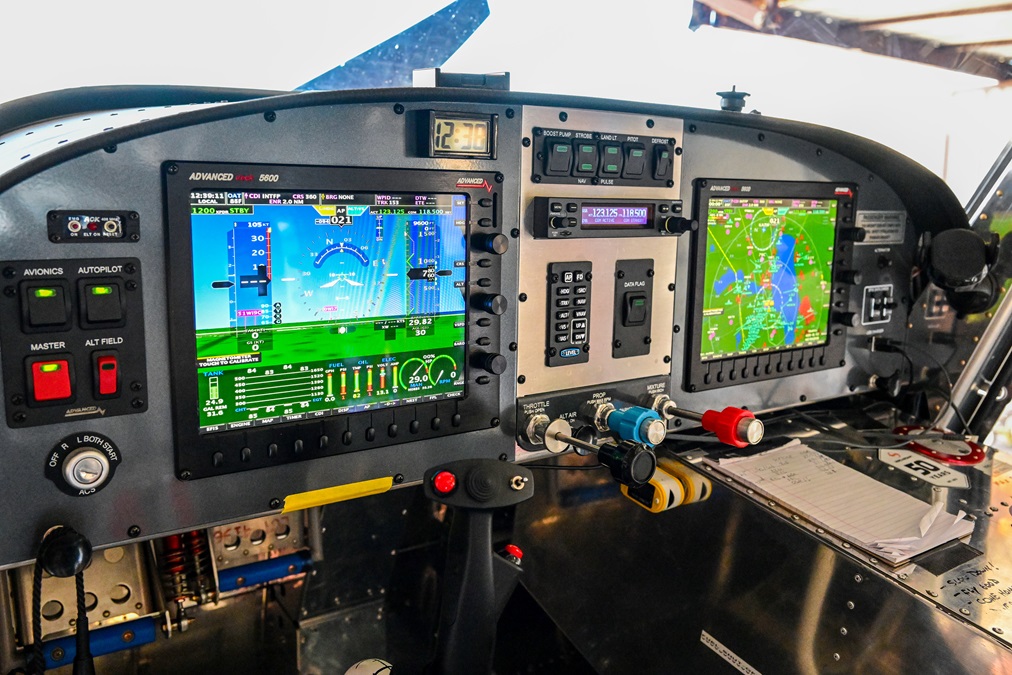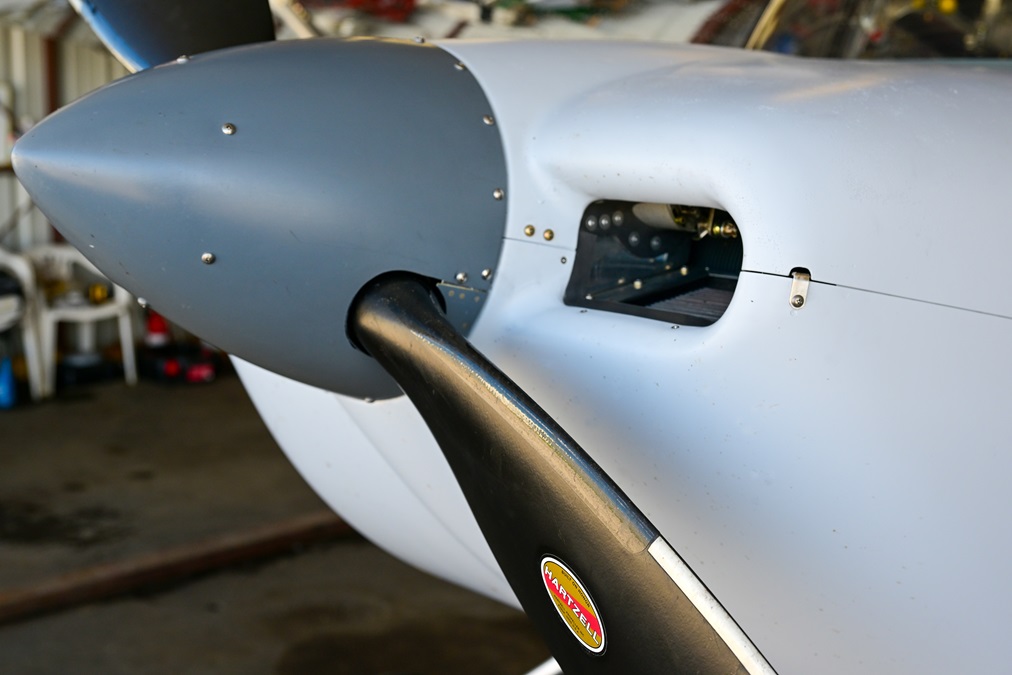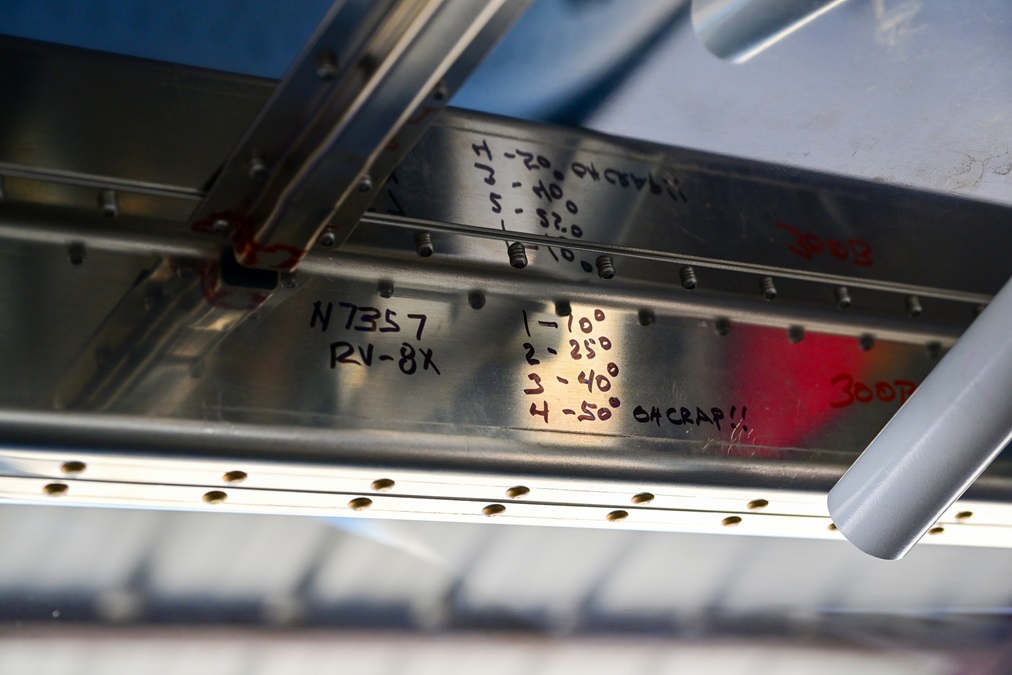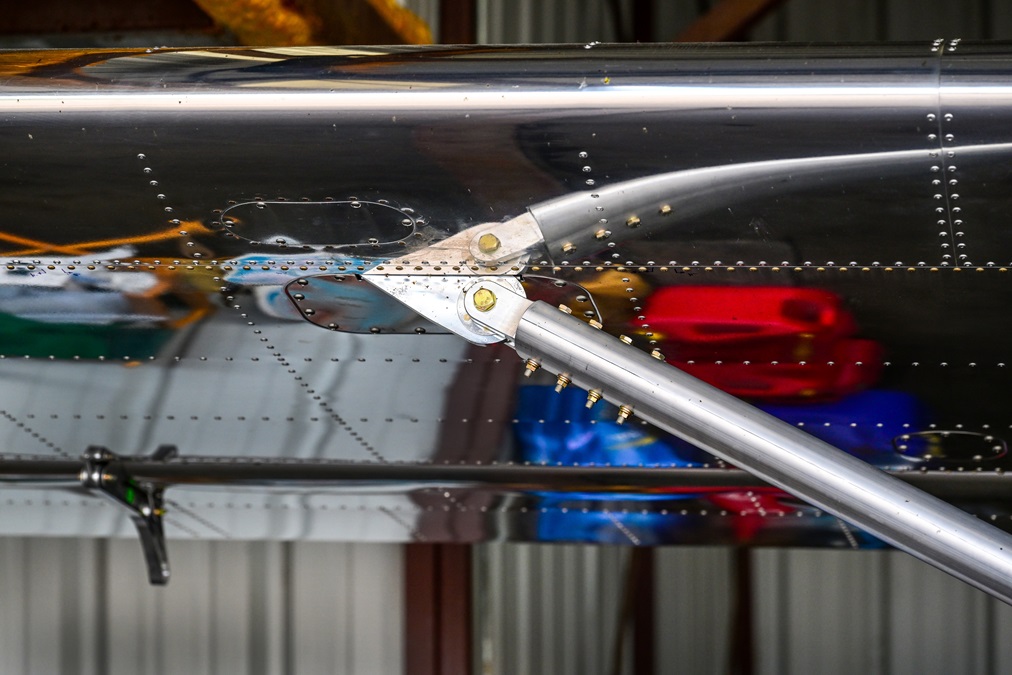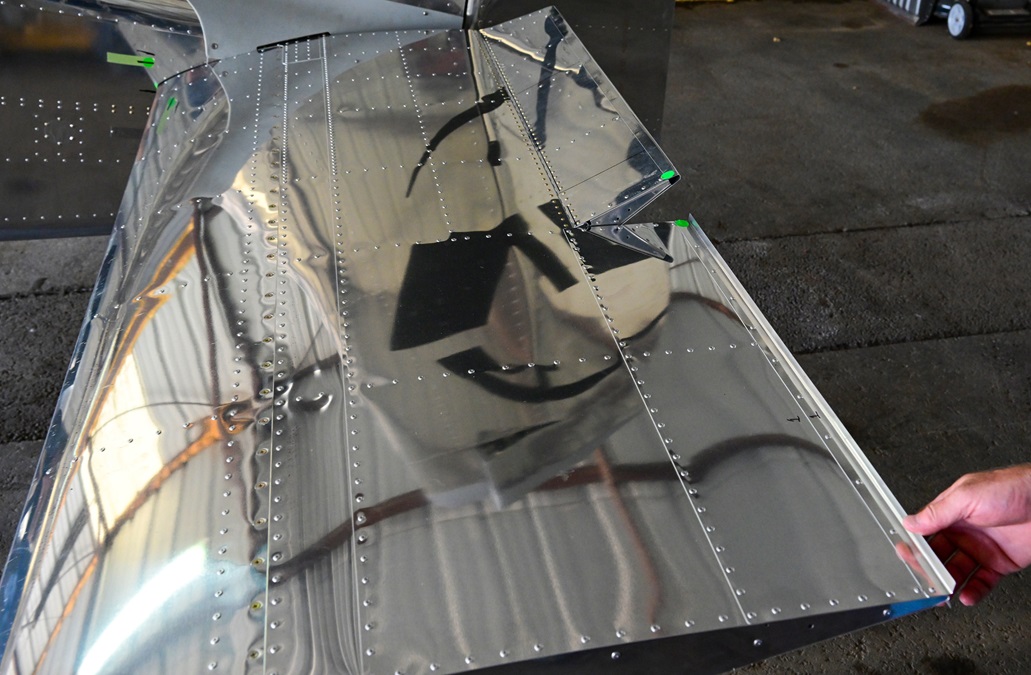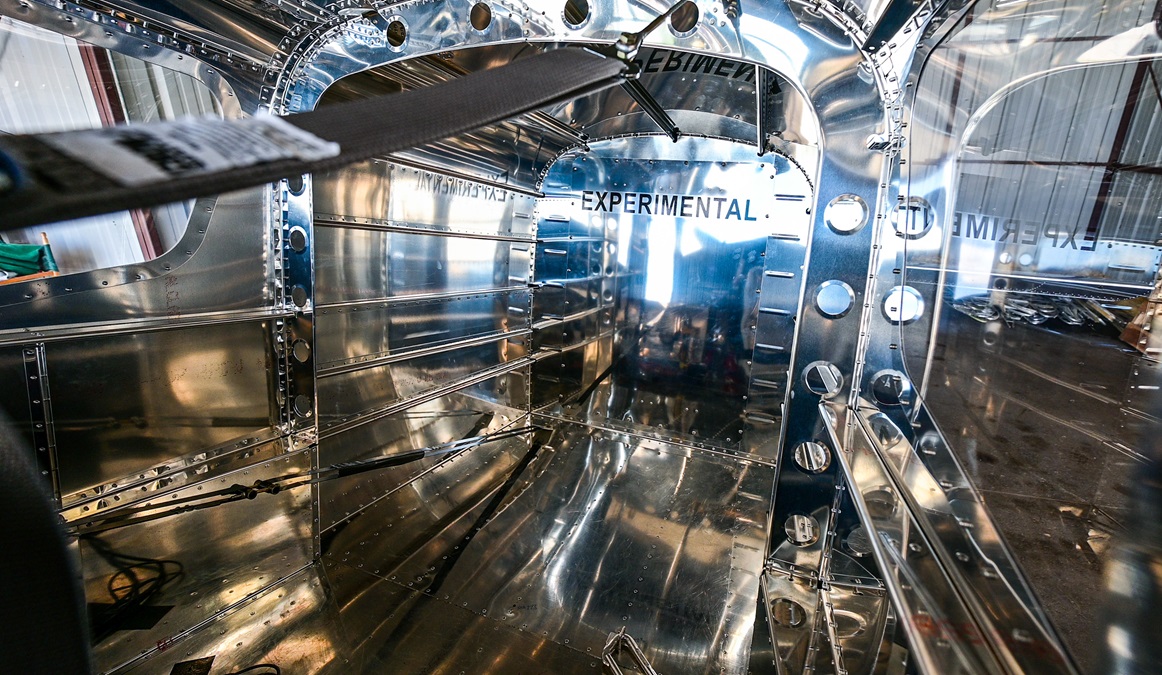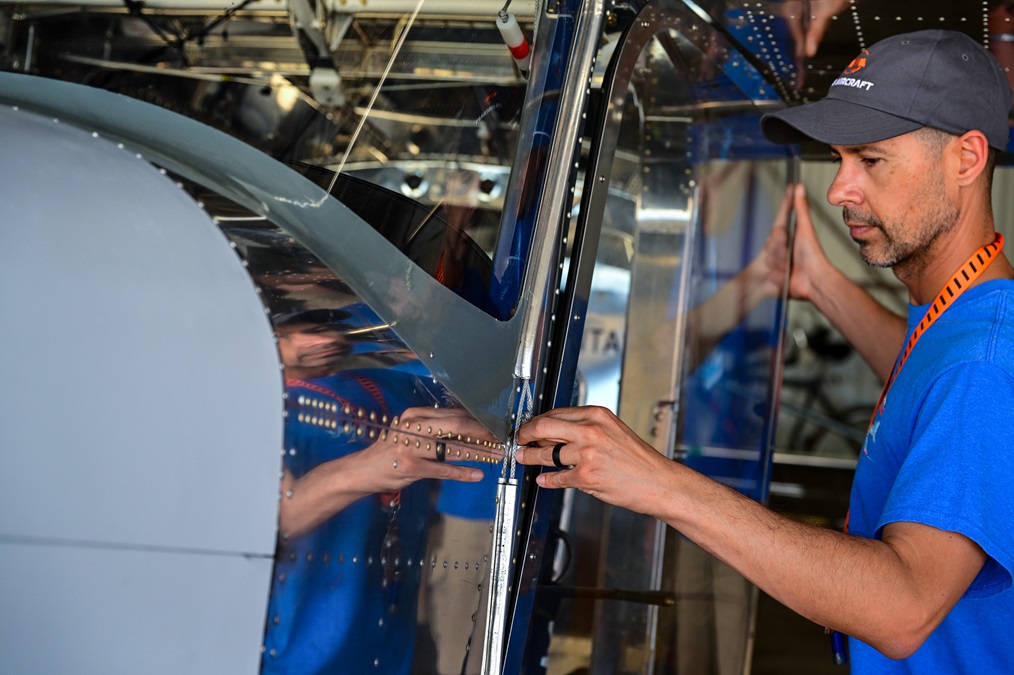First impressions of Van's RV–15
The Van’s Aircraft RV–15 is bigger and taller in person than you might expect from seeing it in videos.
Even on relatively small 6.00 by 6 tires, the leading edge of the wings is tall enough for most adults to step under without ducking. The fuselage is as wide as a Cessna 182 Skylane, and its constant-chord wings have a roughly 36-foot span, also the same as a Skylane.
The overall length and height are slightly smaller than a Cessna 180 Skywagon, and sleeker. Unlike the four-seat Van’s Aircraft RV–10, the RV–15 fuselage tapers sharply from the wide front seats, leaving relatively little seat room behind them. There’s enough space for two mountain bikes, or a third seat, or a bench seat that can accommodate two tiny people — but the RV–15 just doesn’t seem large enough for four adults.
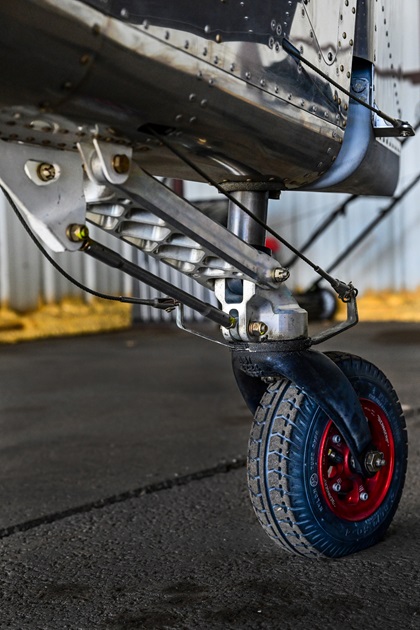
The metal main landing gear appear as unremarkable spring gear that have been common on tailwheel airplanes for more than six decades—but in fact they’re the most original part of the RV–15.
The main gear include four internal oil/nitrogen shock absorbers meant to cushion the impact of landing on rough surfaces, avoid bounces, and improve directional control during takeoffs and landings. The tailwheel also has a dedicated pneumatic shock absorber for the same reasons.
Purists are sure to be appalled by the company's use of pull rivets instead of the more traditional flush variety. But pull rivets have proved themselves in the Van’s RV–12, and they can be installed by a single builder working alone because they don’t require a second set of hands to buck them from behind.
The constant-chord wing with pushrod controls is consistent with other Van’s Aircraft designs, and it’s a compromise. A constant-chord isn’t as aerodynamically efficient as a tapered wing, but it’s far less complicated for builders to produce because all the ribs are identical. The company made the same calculation on the RV–15 wing as its other designs and, unsurprisingly, reached the same conclusion.
Deep-chord Friese ailerons on the RV–15 are a departure for Van’s, but they’re necessary because so much of the wingspan is devoted to flaps.
Fowler flaps cover about two-thirds of the wingspan and deploy to an astoundingly draggy 50 degrees on the prototype. (A Cessna 182, by comparison, has a maximum 30 degrees of flap travel.) This is the first Van’s design with Fowler flaps, and they’re manually actuated via a long lever at the top of the cockpit.
The tail is perhaps the most unusual aspect of the airplane because the proportions just look aesthetically wrong. The vertical stabilizer is huge, and so is the mass-balanced rudder. Perhaps because these surfaces are so large, the stabilator seems small by comparison.

The light sport RV–12 is the only other airplane in the Van’s Aircraft family with a stabilator, and designers said they selected it for the RV–15 for compelling reasons. The high-wing airplane with Fowler flaps that deploy up to 50 degrees creates a powerful nose-down pitching force—and that requires a stabilator and servo tab with more area than a standard elevator to counteract.
The big tail hints at a future floatplane version of the RV–15, and Van’s officials say that’s definitely in the works, although they’re too coy to say whether their company will produce the floats or float kits themselves.
The RV–15 has many visually appealing features. The prototype has a pair of transparent, front-hinged, side doors for exceptional downward visibility, and two skylights that make the cockpit bright and airy. Van’s designers say those are likely to remain in the final version.
Van’s officials are notoriously tight-lipped about the RV–15’s performance figures, but they did say they set ambitious design goals and they expect the new airplane to meet them. For example, they wanted the RV–15 to take off and land in 400 feet or less, and have a top speed in level flight of at least 140 knots.
They wouldn’t reveal its stall speed, but they must be satisfied with it because they haven’t taken any dramatic steps to lower it. The RV–15 prototype doesn’t have vortex generators, for example, or wing slats known to reduce stall speeds.
The RV–15 also stands at a fairly shallow deck angle of about 10 degrees, similar to other tailwheel RVs. That’s meant to preserve over-the-nose visibility in the landing attitude and improve ground handling.
Van’s began working on the RV–15 in 2019, and built the prototype at the company’s Oregon factory in 2021. The first flight took place in June.
Ever since Dick VanGrunsven founded Van’s Aircraft in 1972, the company’s design philosophy has been built around his “total performance” concept. Van’s models don’t stand out in any single criterion. They’re not the absolute fastest, and they don’t have the slowest stall speeds. They don’t carry massive payloads, or have the longest range.
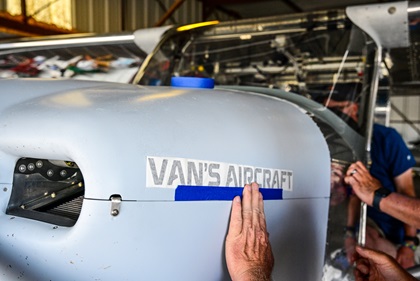
But when considering versatility and the full spectrum of speed, range, short-field capability, handling qualities, utility, and efficiency, Van’s models more than measure up. Even though Van Grunsven says he personally played a very limited role in developing the RV–15, the airplane appears to adhere to his long-held principles.
The RV–15 won’t win STOL competitions. But it will get in and out of short, rough, high-elevation airstrips, and it will have more speed and range and better handling qualities than its peers. The RV–15 will be well-mannered and predictable, and it will make doing difficult tasks seem easy.
VanGrunsven said he’s been astounded and, “frankly, a bit intimidated,” by the high level of interest in the RV–15 throughout the aviation community.
“Expectations are extremely high,” he said. “There’s a tremendous amount of interest in the RV–15 and it reaches beyond traditional kit builders.”
But don’t expect the RV–15 to start showing up at your home airport anytime soon. The company plans to continue testing and modifying the prototype through the end of this year, and it hasn’t said when it will start delivering kits.
“The testing continues, the engineering process continues, and the refinement and development of the airplane will go on for the next several months,” said Greg Hughes, a Van’s spokesman. “We don’t know exactly how long that process will take, or when we’ll start selling kits—but it’s not now, and it won’t be this year.”
The company isn’t taking deposits on RV–15 kits or reservations.
“A few people have sent deposits on RV–15s—and we returned them,” VanGrunsven said. “We have a certain order in which we’re comfortable doing business, and we don’t take deposits until we’ve fully tested an airplane and are satisfied with the results. We still have more work to do on the RV–15 before it goes to market.”


